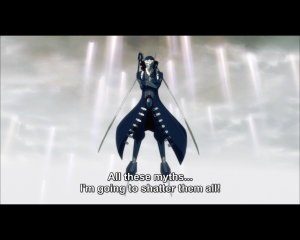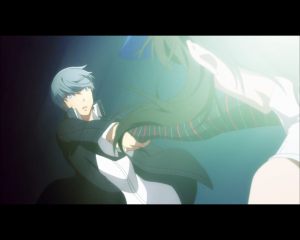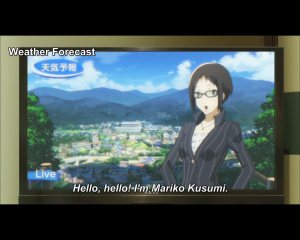Persona 4 The Golden Animation: Final Review
 Genre: Fantasy, Mystery, Supernatural
Genre: Fantasy, Mystery, Supernatural
Format: 12 Episodes
Allegiance: A-1 Pictures
Director: Seiji Kishi, Tomohisa Taguchi
Vintage: 2014
Intelligence Agency Report by: Dr. Magnanimus
Transfer student Yu Narukami arrives in the quiet rural town of Inaba, where rumors abound of a mysterious “Midnight Channel” that appears during rainy nights. Together with several new classmate friends, Yu discovers a connection between the rumor and a sudden series of unsolvable murders that started occurring in Inaba. The group resolves to investigate the Midnight Channel’s otherworld to solve the mystery and stop the murdering culprit, armed with strange new powers called Personas to fight the Shadow creatures within.
Field Agent Report by: Dr. Magnanimus
| Plot Characters Animation Audio Impact |
9.00 9.00 7.50 7.00 8.50 |
|
Overall |
8.00 |
Much of my experiences with anime based on video games dictate that it can be a hit-or-miss affair. Sometimes the anime itself can even be considered better than the source material. I was not fortunate enough to play Persona 4 Golden for the PS Vita before reviewing this anime, but I can say with confidence that it was a decent expansion to the first game’s adaptation. The charms of the game’s themes, the highly-amusing references for veteran players, and the well-paced “extra” storyline all come together to make the anime a good supplement to the Persona game series.
The story structure is mindful of the original anime’s revisited plot, and deftly avoids most of it in favor of in-between, occasional slice-of-life events that craft a new secondary narrative involving the new character, Marie. I was hesitant at first to embrace this new person being injected into the social network of Yu and his friends, thinking nothing more of it as an excuse to put yet another anime moe archetype (of the tsundere variety) into the game for the otaku fanbase. But with time, I grew to like her and care about the struggles she was dealing with. More surprising was just how appropriate she really was to the main conflict, and her close connections to the antagonists made her very relevant. The themes of self-acceptance and dual natures were reexamined in Marie’s arc in profound ways, bringing greater closure to the protagonists’ conflicts at the end of the story.
The animation was pretty adequate for a game adaptation. The opening sequence was whimsical and fun, with a very special sitcom flavor to it. The visuals did a decent job conveying the rural Japanese town setting and various supernatural effects, but there is nothing that I would say stands out from other anime in the same genres. The music was taken from the game soundtrack, with a few exclusive anime tracks. I found myself paying little attention to the music, because it just didn’t have the same effect on me that it did in the game; the dialogue alone conveyed the mood of each scene better than any of the music did.
Discounting my lack of experience with the game, I would have to say that as a stand-alone anime, Persona 4 Golden holds up fairly well. The main characters, having already served their trials in the first anime, were still entertaining in a fan-service kind of way as they get thrown together in hilarious situations and act out in fairly predictable ways. Yu and Marie’s relationship was amazingly engaging, and I loved the chemistry of Yu’s aloof, calm demeanor being tempered by Marie’s sharp-tongued expressiveness. As I watched their relationship progress, I could really appreciate the character growth while also being surprised that even Yu had moments of change that never would have occurred without her being there.
In spite of the fact that the visual and audio constructs were by-the-book and uninspiring, Persona 4 Golden still held up for me as a fun experience, with new characters and dynamics that blended easily with the original story. Fans of the game will enjoy this adaptation, but anime fans concerned with aesthetics may need to lower their standards to get into this show.




